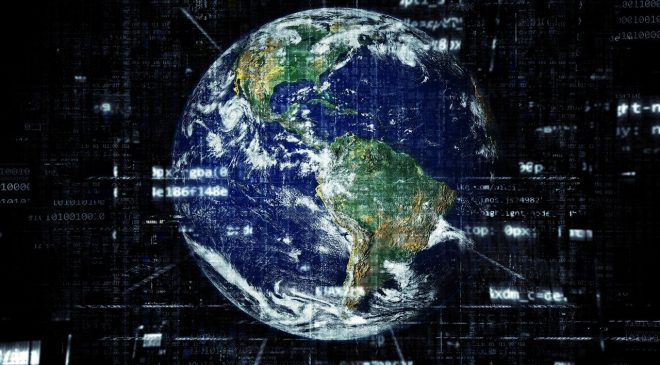
Technology helped APAC region work through the pandemic, will it help in the recovery process?
As countries in the Asia Pacific region takes steps to get their citizens back to a post-COVID normalcy, many are investing in technology as a driver to get the economy back into shape.
Governments in the region are spending millions on various technologies like AI, telecommunications, Cloud, and cyber security either to upgrade their own departments or funding businesses to continue the path of digital transformation.
According to Australian National University the digital economy has accelerated, and the rise of new technologies will transform how business is done and the region recovers in the long term.
ANU expert Professor Evelyn Goh said the pandemic has “highlighted the need to focus on new opportunities of the digital age.”
Australia
Starting with the Australian Government is developing a national Technology Investment Roadmap that will drive investment in low emissions technologies to strengthen our economy and support jobs and businesses. According to the Department of Industry, Science, Energy and Resources this will be a key priority on the road to recovery from COVID-19.
This roadmap will prioritise Australian Government investments in new and developing technologies. Deploying the right technology when and where it is needed will allow Australian industry to capture new opportunities.
The roadmap focuses on:
- developing technologies that will support jobs growth
- backing new industries that will help our regional communities and local economies to prosper
- putting Australia at the forefront of research and development
- maintaining our strong track record of reducing global emissions
The roadmap provides a framework for setting economic stretch goals for priority technology (e.g. H2 under $2)—to accelerate the competitiveness of priority technologies with higher emissions alternatives. Each priority technology will have its own goal, developed in partnership with industry and stakeholders.
Australia’s climate action agenda is practical and clear sighted, driven by science and technology. There is enormous potential in technologies like hydrogen, carbon capture and storage, soil carbon sequestration, biofuels, resources, and energy exports to reduce emissions while strengthening our economy.
Prime Minister Scott Morrison announced AU$1.35 billion in existing defence funding would be spent over the next decade to boost the cybersecurity capabilities of the Australian Signals Directorate (ASD) and the Australian Cyber Security Centre (ACSC).
Singapore
In 2020 Singapore will be spending an estimated S$3.5 billion on infocomm technology (ICT) projects to accelerate digitalisation and support businesses recovering from the impact of COVID-19. While the ICT procurement and digitalisation roadmap is usually announced at the annual Smart Nation and Digital Government Industry Briefing (IB), this year’s IB is going digital in light of the pandemic.
Five key areas of projected Government spending:
- Development of new tech tools to respond to COVID-19;
- Development of citizen- and business-centric digital services;
- Development of ICT systems on cloud;
- Modernisation of government ICT infrastructure; and
- Use of data analytics, artificial intelligence (AI) and sensors within the public sector
ICT players battered by the Covid-19 crisis will have more opportunities to grow their business in Singapore in the coming months.
To accelerate the country’s digital transformation efforts and help these firms ride through the crisis, the Government will increase the total projected value of its ICT contracts for this financial year, which lasts from April this year to March 2021, by more than 30 per cent.
This will bring the total value of government ICT contracts for the year to S$3.5 billion, a bump up from the previous year’s S$2.6 billion.
The Singapore Government’s has also earmarked S$870 million of contracts have been earmarked to double the number of systems on the commercial cloud.
One of the key benefits of the cloud is its ability to connect a wider ecosystem of partners, including users and developers, with government agencies.
Leveraging the cloud capabilities and services of commercial cloud systems also helps the Government to develop applications and services for citizens in a faster and more scalable way, said Kevin Ng, director of Core Operations, Development Environment and eXchange (CODEX) at the Government Technology Agency (GovTech).
Singapore is also stepping up its momentum in using data analytics, artificial intelligence (AI) and sensors to make lives easier, safer and smarter.
This year, the Government will invest over S$710 million in ICT projects that involve the use of data analytics, AI and sensors to deliver better government services.
India
In India the Office of the Principal Scientific Adviser to the Government of India (Office of PSA) and the Department of Science and Technology (DST) have jointly initiated a decentralised, bottom-up, and inclusive process for the formulation of a new national Science Technology and Innovation Policy (STIP 2020).
The fifth S&T policy of India is being formulated at a crucial juncture when India and the world are tackling the COVID-19 pandemic. This is only the latest among the many important changes in the past decade that have necessitated formulation of a new outlook and strategy for Science, Technology, and Innovation (STI).
As the crisis changes the world, the new policy with its decentralised manner of formation will reorient STI in terms of priorities, sectoral focus, the way research is done, and technologies are developed and deployed for larger socio-economic welfare.
The STIP 2020 formulation process is organised into four highly interlinked tracks:
- Track I is an extensive public and expert consultation process through Science Policy Forum – a dedicated platform for soliciting inputs from larger public and expert pool during and after the policy drafting process.
- Track II comprises experts-driven thematic consultations to feed evidence-informed recommendations into the policy drafting process. Twenty-one focused thematic groups have been constituted for this purpose.
- Track III involves consultations with Ministries and States, while Track IV constitutes apex level multi-stakeholder consultation. For Track III nodal officers are being nominated in States and in Ministries, Departments and Agencies of Government of India for extensive intra-state and intra-department consultation
- Track IV consultation with institutional leadership, industry bodies, global partners and inter-ministerial and inter-state consultations represented at the highest levels are being carried out.
- The consultation processes on different tracks have already started and are running in parallel.
“The STI Policy for the new India will also integrate the lessons of COVID-19 including building of an Atmanirbhar Bharat (self- reliance) through ST&I by leveraging our strengths in R&D, Design, S&T workforce and institutions, huge markets, demographic dividend, diversity and data,” said Professor Ashutosh Sharma secretary at DST.
The six-month process involves broad-based consultations with all stakeholders within and beyond the scientific ecosystem of the country –including academia, industry, government, global partners, young scientists and technologists, civic bodies, and the public.
Hong Kong
The Hong Kong Government plans to fund remote working or service for businesses in Hong Kong. Under the Anti-Epidemic Fund, the Innovation and Technology Commission (ITC) has launched the Distance Business (D-Biz) Programme to support enterprises to continue their business and services during the epidemic. The Programme provides funding support through fast-track processing for enterprises to adopt IT solutions for developing distance business. The Hong Kong Productivity Council is the Secretariat of the Programme. For each IT solution and the relevant training expenses for the employees, the funding ceiling is HK$100,000 (with funding for the relevant training expenses capped at 10 per cent of the IT solution cost). Each enterprise may receive total funding of up to HK$300,000 to undertake a project to be completed within six months.
An enterprise will be disbursed a payment of 30 per cent of the funding amount after the application has been approved. Upon completion of the project and after the supporting documents are accepted, the remaining funding amount will be disbursed to the enterprise.
IT solution must only be implemented after approval is granted.
Taiwan
Meanwhile in Taiwan communication technologies have been changing rapidly in recent years, and the development of the 5G network technology is now around the corner. The development of Artificial Intelligence (AI) and Internet of Things (IoT) applications further speed up the need for 5G communication networks. The development of 5G has become an important key indicator of a nation’s comprehensive power.
Under the leadership of Professor Jyh-Cheng Chen of National Chiao Tung University (NCTU), Prof. Chen’s team has released free5GC, the first open-source core network in the world. Because of free5GC, some companies, such as Chunghwa Telecom, Wistron NeWeb Corporation (WNC), and EstiNet Technologies, are now collaborating with Professor Chen.
Based on free5GC, Prof. Chen’s team will further develop “private 5G networks” to enable innovative 5G services in specific areas such as smart factories, intelligent hospitals, smart transportation stations, airports, and seaports, which will make our daily life much more convenient.
With the funding support from the Ministry of Science and Technology (MOST) in Taiwan, Professor Chen’s team has developed free5GC, the first open-source 5G core network in the world conformed to the 3GPP Release 15 international standards. Any base stations or cellular phones complying with the international standards can work well with free5GC.
The initial goal of free5GC was to provide academic researchers with a complete and reliable platform for testing and prototyping 5G systems. However, due to free5GC’s completeness and open source code, it has extremely high commercial value, especially in providing solutions for customized and localised “private 5G networks.”
Philippines
The Department of Information and Communications Technology (DICT) plans to support the National Economic Development Authority (NEDA) in advancing digital transformation in the economic sector amid the current COVID-19 crisis affecting the Philippine economy.
In a statement dated 07 May 2020, NEDA Acting Secretary, Karl Kendrick Chua, emphasized the need to transition to a digital economy to better adapt to the ‘new normal’. Acting Secretary Chua pointed out that several structural reforms are also needed to be put in place.
DICT Secretary Gregorio B. Honasan II said that the DICT fully supports the efforts of NEDA and continues to implement programs aimed at digitalizing the government, the community, and the economy.
“The DICT supports digital transformation in the economic sector. Under the banner of a Digital Philippines, we are employing a holistic approach towards digitalistion, focusing on connectivity, cybersecurity, and digital literacy,” Secretary Honasan said. We are optimistic that the transition of the Philippines to a digital economy will make the country’s economy more resilient to external factors, such as the COVID-19 pandemic.”
Malaysia
PIKOM — National Tech Association of Malaysia said Malaysia’s economic recovery plan utilise the potential of the Digital Economy based on the announcement of the government’s Short-Term Economic Recovery Plan today by the Prime Minister YAB Tan Sri Muhyiddin Yassin.
The focus on digitalisation and automation which would place Malaysia in good standing in the post Covid-19 recovery phase.
The allocation of RM700 million to drive digitalisation of businesses and innovation and smart automation funds of RM100 million will be a shot in the arm that is greatly needed to provide the leap for Malaysia into the digital economy.
In addition to that, as an effort to encourage micro enterprises and SMEs to use digital services, the government together with the private sector will finance this effort.
“This importance of the Digital Economy is very much central to the economic recovery efforts. This will greatly benefit the tech industry,” said Danny Lee, Chairman of PIKOM.
This is further fuelled by the RM 140 million matching grant and the RM 70 million Shop Malaysia Online allocation for e-commerce. Micro enterprises and SMEs in Malaysia will be well positioned for the digital revolution taking place.
“We also applaud the RM 700 million funding provided for SMEs and mid-tier companies. These grants and funding will be the bridge for SMEs and mid-tier companies to cross the chasm into the digital realm,” added Lee.
The venture investment and risk capital needs of start-ups and growth stage companies also received the attention of the Government with the setting up of the Dana Penjana Nasional Investment Fund.
The pivot towards a digital strategy is also evident with the delivery of Government service, a Buy Malaysia campaign anchored on digital platform and the matching allocation of RM 50 for e-wallets. This will provide a catalytic effect on the digital economy and the economic recovery can only be sustained if Malaysians continue to be employed.
Indonesia
Currently Indonesia is still facing the challenges of digital skills gap or digital talent gap. That happened because the need for skilled workers in the digital field was still not fulfilled. Therefore, the Ministry of Communication and Information seeks to equip workers in Indonesia with the 2020 Digital Talent Scholarship (DTS) Training Stimulus Program.
According to the Special Staff of the Minister of Communication and Information Dedy Permadi, the Ministry of Communication and Information mapped three levels of digital skills, all of which are prerequisites for the acceleration of Go Online or Go Digital MSMEs.
“At the lowest level, we have basic digital skills, or what people call digital literacy. Secondly, at the higher level Kominfo has intermediate digital skills.
This is what is needed is a technical level. Lastly, we want to work on it right in the MSME sector,” he said while speaking as a virtual series speaker. “We currently really need some type of hard skills to deal with the 4.0 industrial revolution, such as Big Data Analytics, Artificial Intelligence, Cybersecurity, Cloud Computing, Internet of Things, Machine Learning, and so on,” he explained.
Dedy said the challenges ahead for SMEs are expected to not only be on boarding, but they can be upskilling, rescaling, even they can enter the business world far more advanced than before.
“Now, the last resource in the digital era is the advanced digital skill where we equip C-levels or chief levels for the public and private sectors,” he explained.
Tags: AI & Machine LearningCloudCyber SecuritygovernmentIoTPost COVID




